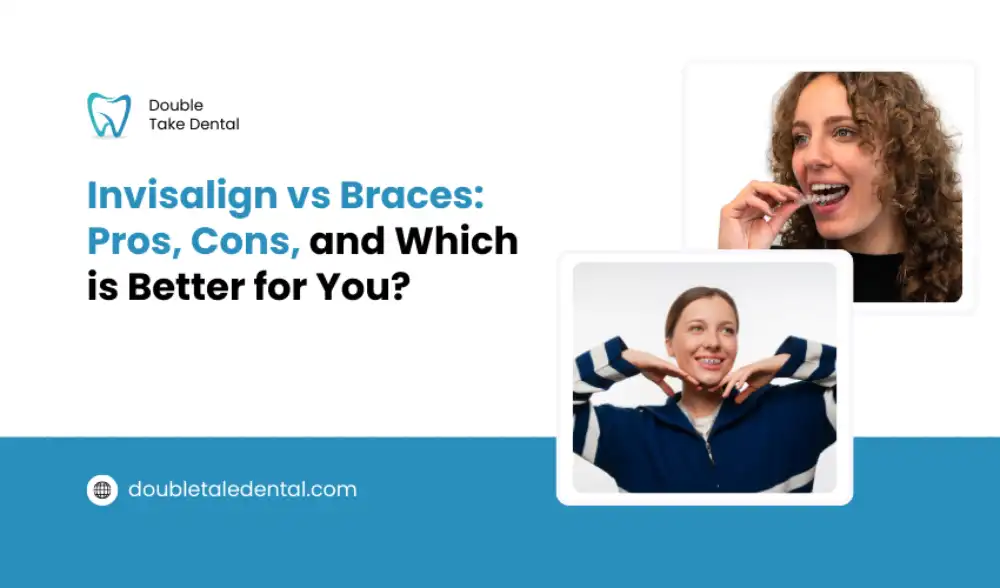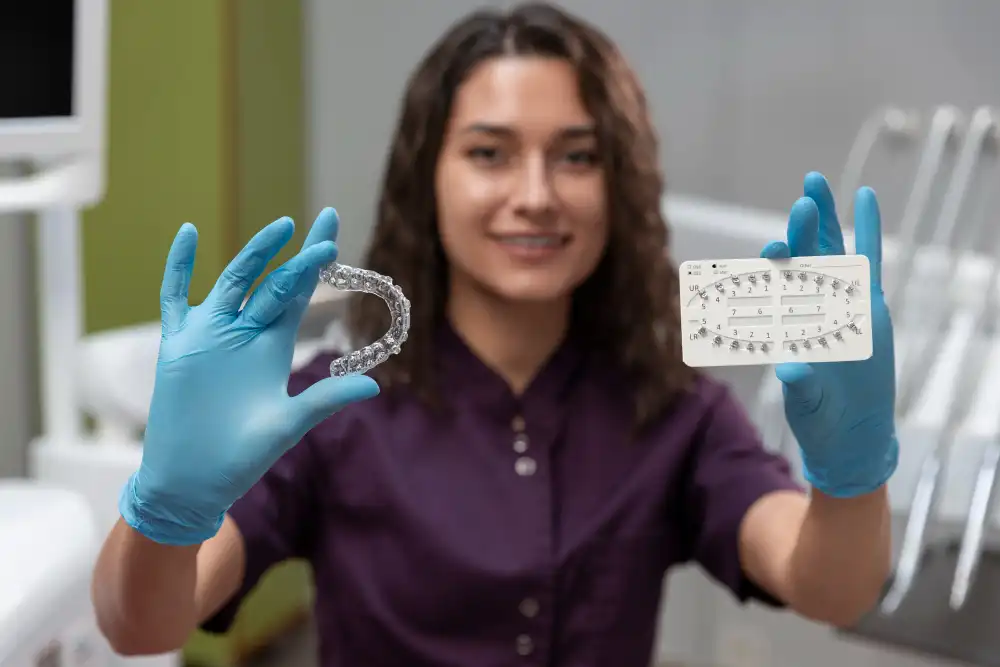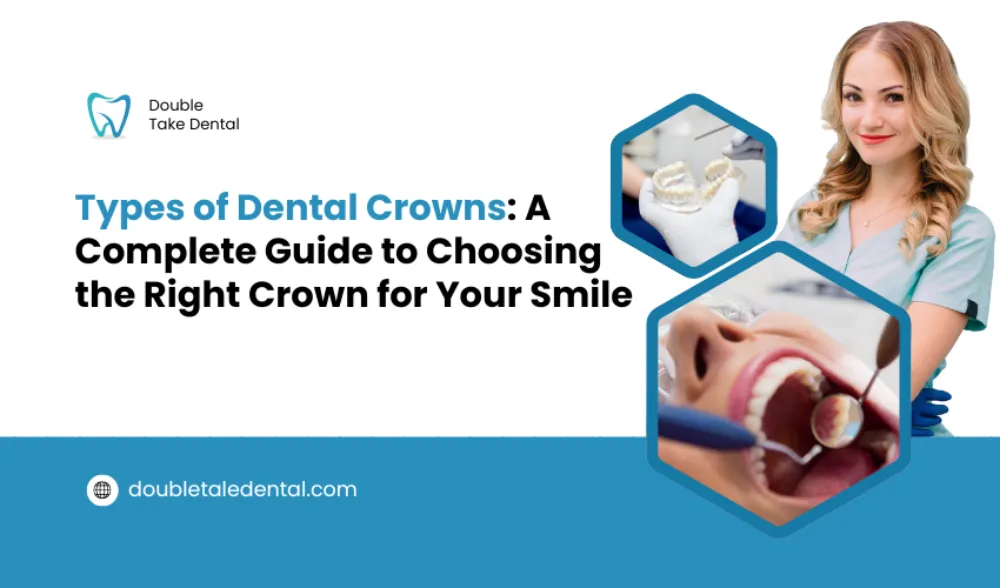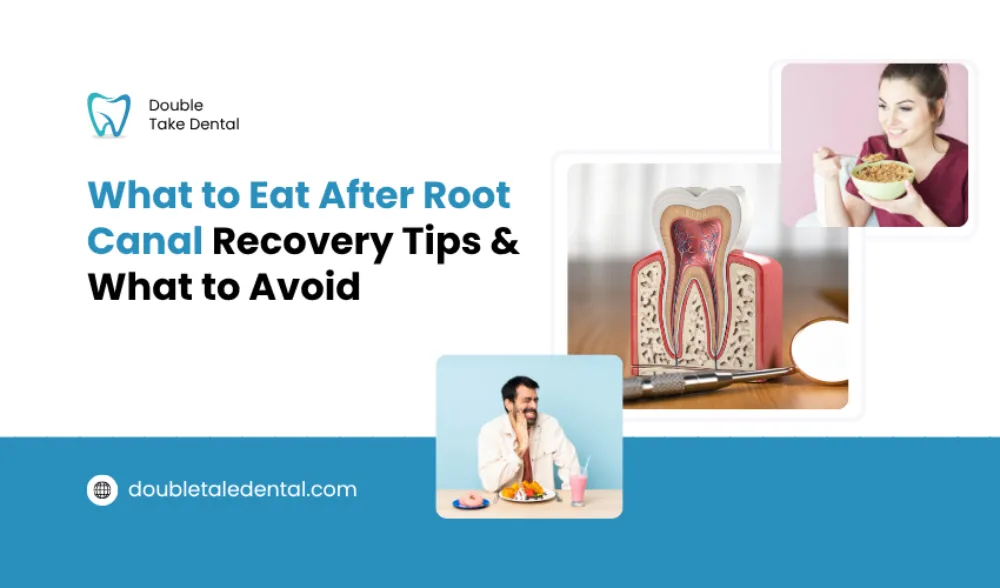Invisalign vs Braces: Pros, Cons, and Which is Better for You?

Did you know that over 4 million Americans are wearing braces right now, and that 65% of adults have misaligned front teeth? If you are thinking about straightening your smile, the choice often comes down to Invisalign or braces.
Is Invisalign better than braces, or are braces better than Invisalign? Both options are effective but work differently. Invisalign offers clear, removable aligners, while braces use metal brackets for consistent pressure. Your choice depends on your lifestyle, budget, and treatment needs.
This guide compares Invisalign and braces, outlines the pros and cons, and helps you decide which option is right for your smile.
What is the Difference Between Invisalign and Braces?

Invisalign employs a set of clear, removable aligners crafted from smooth plastic to gently reposition your teeth. Braces consist of metal or ceramic brackets attached to the teeth and linked by wires that are regularly tightened.
| Feature | Invisalign | Braces |
| Appearance | Nearly invisible clear aligners | Visible metal or ceramic brackets |
| Removability | Removable during eating and brushing | Fixed to teeth |
| Maintenance | Easy to clean separately | More effort to clean around wires |
| Best For | Mild to moderate alignment issues | Complex dental issues |
| Checkups | Every 6–8 weeks | Monthly |
The main difference between Invisalign and braces lies in their visibility, maintenance, and suitability for various types of orthodontic cases.
Let’s have a more detailed look at these factors and how they help you to decide a suitable option for you.
Which Option is Aesthetically Suitable?
If you are concerned about the appearance of your orthodontic treatment results, choosing Invisalign vs braces offers a more discreet and appealing solution. Invisalign aligners are made of transparent plastic. Their material makes them virtually unnoticeable during conversations and photos. Braces, although smaller than they used to be, still involve visible metal brackets and wires.
There are aesthetic upgrades available for traditional braces, including ceramic brackets that blend with the color of your teeth. These options provide a middle ground for patients who want the power of braces but less visual impact.
Which Option is More Comfortable?
Comfort is a key factor in long-term treatment compliance. Invisalign aligners are smooth and custom-fitted, which often makes them more comfortable for day-to-day wear. They cause minimal irritation and do not have metal wires that can poke the cheeks or lips.
On the other hand, braces may cause soreness after tightening appointments. Brushing and flossing also take more time because of the brackets and wires. Moreover, Invisalign aligners can be removed during meals and while brushing, and give you more freedom.
Which Option is More Effective and Less Time Consuming?

Both braces and Invisalign are effective, but their efficiency depends on your orthodontic condition.
Braces are generally preferred for complex cases such as severe crowding, large gaps, or significant bite issues. Because they are fixed and do not rely on patient compliance, they work around the clock. Treatment time with braces typically ranges from 18 to 24 months.
Invisalign works very well for mild to moderate alignment issues. Treatment time can be shorter, around 6 to 18 months, if you wear the aligners as prescribed (20–22 hours per day).
Which One is Easier to Manage?
When it comes to maintenance and day-to-day care, Invisalign has the upper hand. The removable trays help you in your daily care routine. You can also clean the trays separately using a gentle cleanser.
Braces require careful brushing around brackets and wires. Food particles can easily get trapped in it. This increases the risk of plaque buildup and decay if not cleaned properly.
However, Invisalign demands discipline. If you do not wear the trays consistently, your treatment progress will slow down. Both systems need commitment, but if you want fewer hygiene hassles, Invisalign may suit your lifestyle better.
Which One Is More Affordable?
The cost of orthodontic treatment varies based on your case complexity, geographic location, and duration of treatment. On average:
- Braces can cost between $3,000 and $7,000
- Invisalign typically ranges from $3,000 to $8,000
Insurance may cover a portion of either option. Many dental care providers, including Double Take Dental, offer flexible payment plans.
Although Invisalign may appear more expensive upfront, the final cost often depends on how long the treatment lasts and how compliant you are.
Invisalign vs Braces: Pros and Cons Breakdown
| Invisalign | Braces | |
| Pros | Nearly invisibleRemovableEasier hygieneMore comfort | Effective for complex issuesNo need to remove to work |
| Cons | Requires disciplineNot suitable for complex cases | VisibleMay cause discomfortHarder to clean |
Who Is a Good Candidate for Each Option?
You might be a good candidate for Invisalign if you:
- Have mild to moderate spacing or alignment issues
- Are responsible and committed to wearing aligners daily
- Prefer a low-profile, removable solution
You might benefit more from braces if you:
- Have severe crowding, bite issues, or complex alignment needs
- Are younger (as teens may find it easier to commit to fixed appliances)
- Prefer a treatment that does not rely on self-discipline
Consulting an experienced dentist or orthodontist is the best way to determine which option suits your needs.
Expert Help in Choosing the Right Path: Visit Double Take Dental
At Double Take Dental, we guide you through every step. Our team begins with a detailed consultation to evaluate your teeth, discuss your goals, and suggest the option that fits you best.
Choosing us means you will get clear answers, a realistic treatment plan, and flexible payment options—all customized to your needs.
Visit Double Take Dental for expert advice and care tailored to your smile.
Final Thoughts
So, Invisalign and braces are both proven ways to straighten your teeth and improve oral health. The best option depends on your specific needs, daily routine, and goals. Invisalign provides comfort, flexibility, and a nearly invisible look while braces offer precise control, especially for more complex cases.
It is important to understand the pros and cons of both treatments but making the right decision requires expert input. Ultimately, personalized advice from a dental professional ensures the best outcome for your smile.
Recent Posts

What Foods To Avoid After a Tooth Extraction & What to Eat

Types of Dental Crowns: A Complete Guide to Choosing the Right Crown for Your Smile

What to Eat After Root Canal: Recovery Tips & What to Avoid

